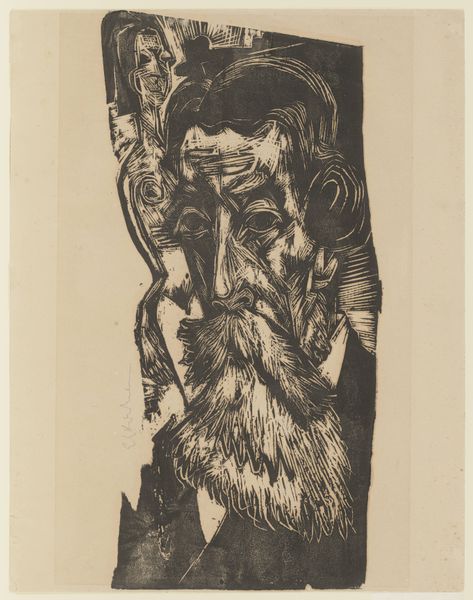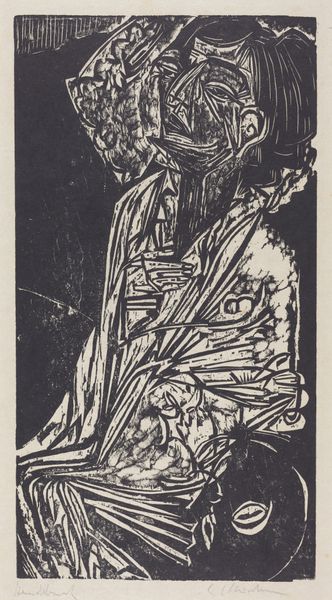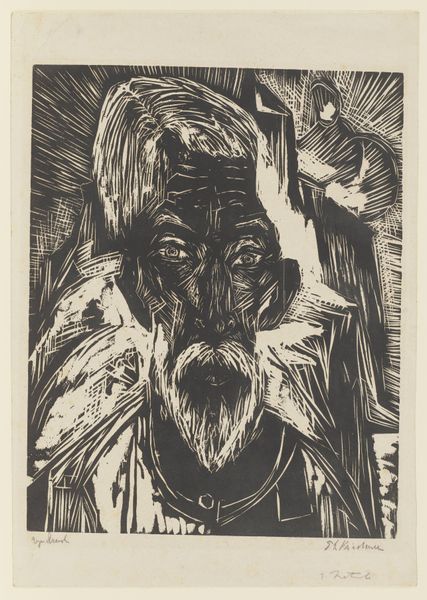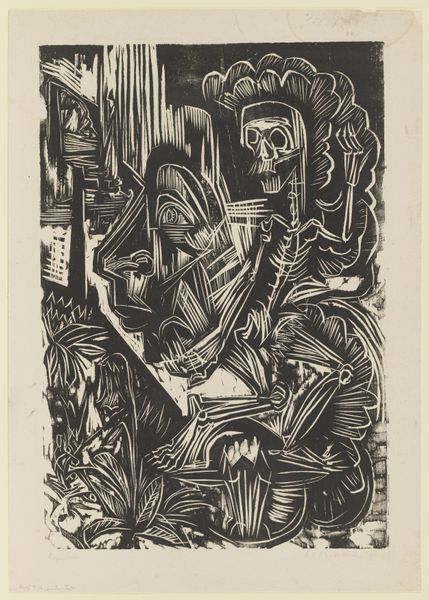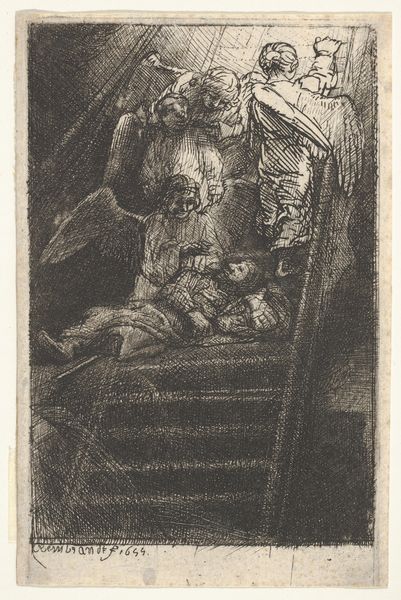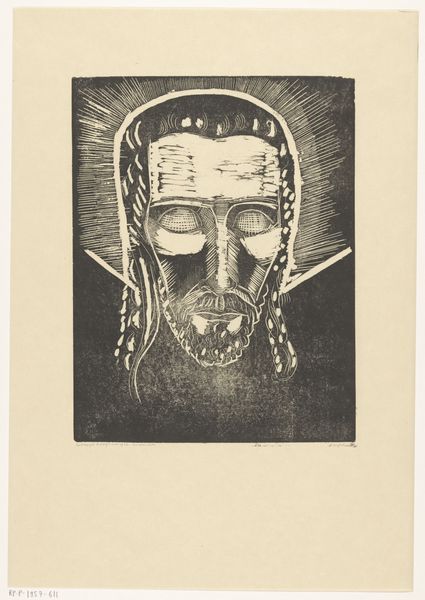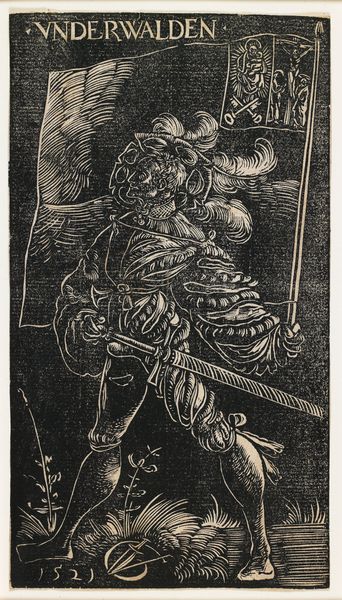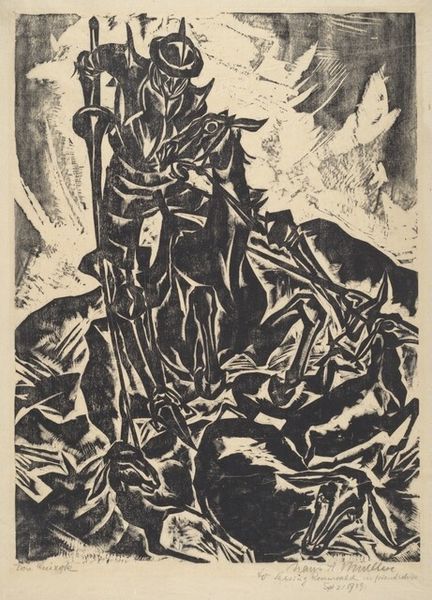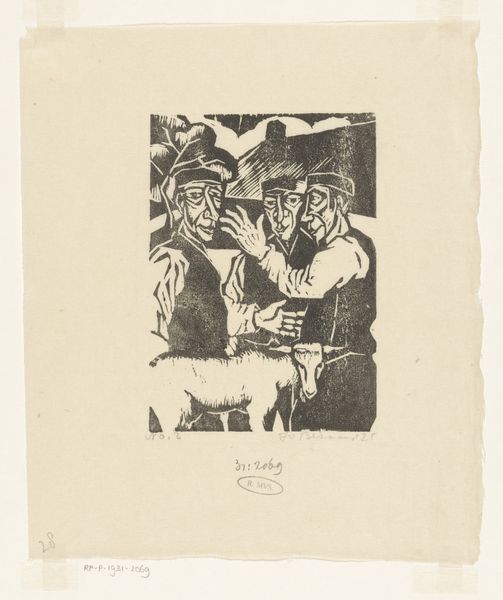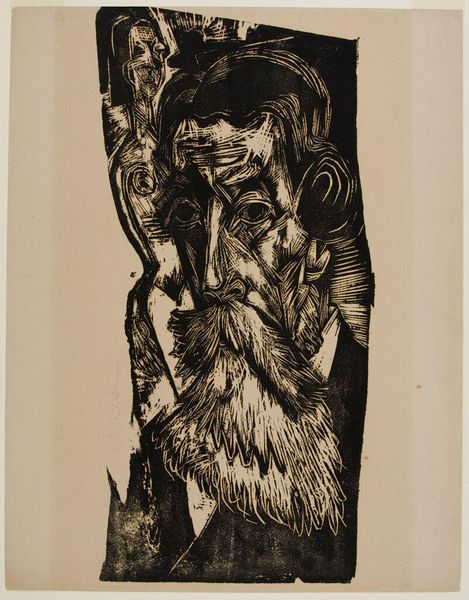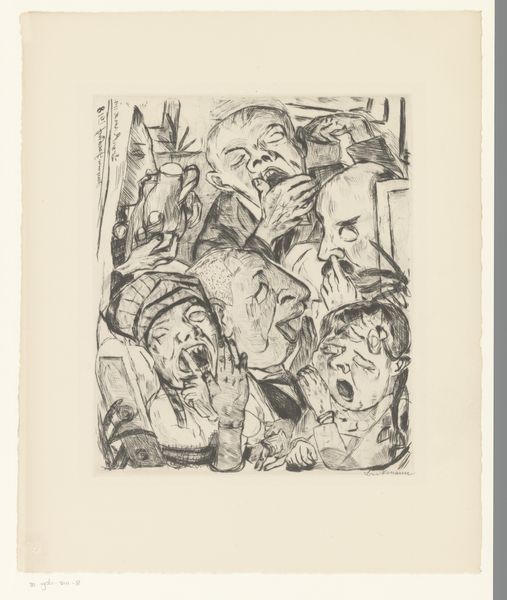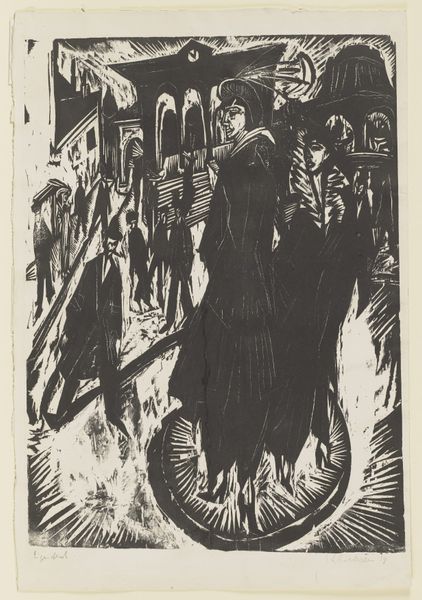
drawing, print, woodcut
#
portrait
#
drawing
# print
#
german-expressionism
#
figuration
#
expressionism
#
woodcut
Copyright: Public Domain
Editor: This is Ernst Ludwig Kirchner's "Alter Berghirte," or "Old Mountain Shepherd," created in 1919. It’s a woodcut print. The harsh lines and deep blacks make the subject seem really worn and weathered. How do you interpret this work, particularly considering the period in which it was made? Curator: The raw emotion in Kirchner's woodcut, so typical of German Expressionism, reflects a society grappling with the fallout from the First World War. This portrait transcends the individual, speaking to the psychological trauma and alienation felt by many. How do the formal qualities – the jagged lines, the stark contrast – contribute to this feeling? Editor: They definitely create a sense of unease. It's like the man's very being is fractured. Is Kirchner using this image to critique something larger than just one person? Curator: Precisely. Consider Kirchner's own struggles with mental health, exacerbated by his wartime experiences. This Shepherd can be seen as an allegorical figure representing the displaced, the marginalized, and those left behind by a rapidly changing world. Does his attire or bearing offer additional clues to his identity and social standing? Editor: I hadn't thought of that. His weathered clothes, they suggest a life of hardship and isolation far away from the city...maybe even outside of society? Curator: Yes, and the darkness surrounding him can symbolize not just physical isolation, but the social and economic marginalization faced by many rural communities during the early 20th century. Seeing the historical context is crucial, do you agree? Editor: Absolutely. I went into this thinking about the art, but not as a commentary of a tumultuous period in German history. Curator: And sometimes that intersection is where art creates a space for dialogue and provokes critical engagement with our world.
Comments
No comments
Be the first to comment and join the conversation on the ultimate creative platform.
